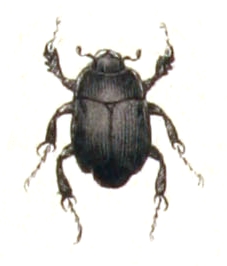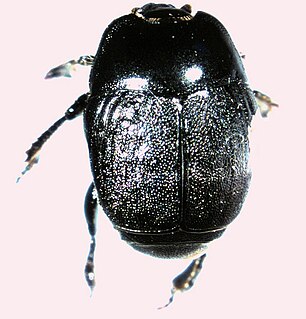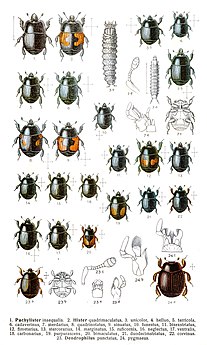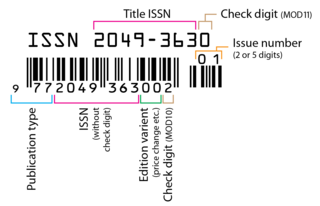
Hypocaccus is a genus of clown beetles in the family Histeridae. There are at least 120 described species in Hypocaccus.
Arizonacritus is a genus of clown beetles in the family Histeridae. There is at least one described species in Arizonacritus, A. talayesvai.
Teretriosoma is a genus of clown beetles in the family Histeridae. There are about nine described species in Teretriosoma.
Baconia is a genus of clown beetles in the family Histeridae. There are at least 110 described species in Baconia.
Strigister is a genus of clown beetles in the family Histeridae. There are at least two described species in Strigister.
Chelyoxenus is a genus of clown beetles in the family Histeridae. There is at least one described species in Chelyoxenus, C. xerobatis.
Pinaxister is a genus of clown beetles in the family Histeridae. There are at least four described species in Pinaxister.
Iliotona is a genus of clown beetles in the family Histeridae. There are about five described species in Iliotona.
Caerosternus is a genus of clown beetles in the family Histeridae. There is at least one described species in Caerosternus, C. americanus.
Pseudepierus is a genus of clown beetles in the family Histeridae. There are at least two described species in Pseudepierus.

Dendrophilus is a genus of clown beetles in the family Histeridae. There are about 11 described species in Dendrophilus.
Hippeutister is a genus of clown beetles in the family Histeridae. There are about six described species in Hippeutister.
Ulkeus is a genus of clown beetles in the family Histeridae. There are about six described species in Ulkeus.
Aritaerius is a genus of clown beetles in the family Histeridae. There is at least one described species in Aritaerius, A. pallidus.
Yarmister is a genus of clown beetles in the family Histeridae. There are at least two described species in Yarmister.
Merohister is a genus of clown beetles in the family Histeridae. There are about eight described species in Merohister.
Peploglyptus is a genus of clown beetles in the family Histeridae. There are at least three described species in Peploglyptus.

Neopachylopus is a genus of clown beetles in the family Histeridae. There are about six described species in Neopachylopus.
Idolia is a genus of clown beetles in the family Histeridae. There are about five described species in Idolia.
Aphelosternus is a genus of clown beetles in the family Histeridae. There is at least one described species in Aphelosternus, A. interstitialis.






